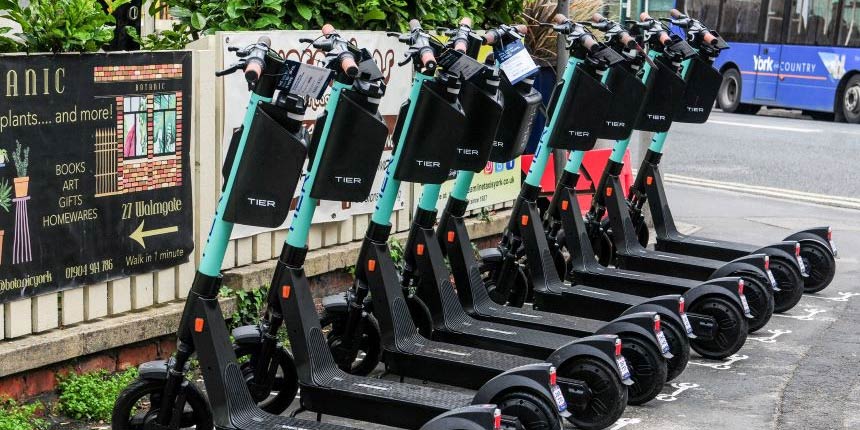E-scooters, electric bikes, segways and hoverboards
29 April 2024
As the use of e-bikes, e-scooters and similar devices continues to rise in popularity, there has been a significant increase in fires linked to their use. These fires have resulted in property damage, serious injury and sadly some fatalities.

This guidance highlights some of the hazards associated with the charging of e-scooters, electric bikes, segways and hoverboards at home and the steps that can be taken to reduce or mitigate them.
Advances in technology have seen the increasing popularity of battery-powered personal transport such as e-scooters and electric bikes, which can be stored and charged in the home.
E-scooters, electric bikes, segways and hoverboards all come with rechargeable batteries. These are typically charged using a cable plugged into a 13amp wall socket. These devices are powered by lithium-ion batteries, which can become unstable if they are not used properly, or become damaged or overcharged, which can lead to the battery and device catching fire and releasing toxic smoke.
To reduce the likelihood of an incident developing, we recommend the following measures:
- It is important to follow the manufacturer’s instructions when charging your device, and never use charging equipment that isn’t compatible with the make of your e-scooter, e-bike etc.
- Always buy your charging equipment from a reputable retailer or directly from a manufacturer and ensure it is CE certified.
- You should only use chargers that have been fitted with protection against overcharging, overheating and surges.
- Do not use a battery that has signs of damage, has received a sharp blow, has been dropped, or is in poor condition. Replace it with a new one compatible with your device.
- Batteries should not be left to charge unattended overnight or when your home is unoccupied.
- You should avoid leaving items continually on charge after the charge is complete. Unplug battery chargers when not in use.
- Ensure you frequently check your charging cable for wear and tear and replace it if any damage is evident.
- If you are charging from a 13A mains socket in your home, ensure the wiring in your property has been checked prior to doing so. Old wiring may not cope with the demand from charging your device.
- Think carefully about where to charge the device, it may be convenient to use the hall or entrance lobby to your house, but make sure you can safely exit your home should an incident occur.
- Ensure there is no flammable or combustible material within two metres of the charging point.
- You should ensure that the charging area is covered by a combination smoke/heat alarm.
- Consider purchasing a lithium battery fire extinguisher, designed to help tackle lithium-ion battery fires.